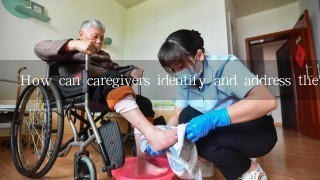How can caregivers identify and address the needs of elderly people?

Answer:
1. Assess the individual's needs:
- Gather information from the elderly person, their family, and healthcare providers.
- Identify their physical, emotional, social, and cognitive needs.
- Use a comprehensive assessment tool, such as the Mini-Mental Status Test (MMT) or the Activities of Daily Living (ADLs) scale.
2. Establish a trusting relationship:
- Build a strong bond with the elderly person through regular communication, empathy, and respect.
- Encourage them to express their feelings and concerns.
3. Promote physical health and well-being:
- Encourage regular exercise, healthy eating, and adequate sleep.
- Provide opportunities for social interaction and physical activities.
- Address any medical conditions or disabilities they may have.
4. Foster emotional well-being:
- Validate their feelings and provide comfort during difficult times.
- Encourage them to maintain social connections and participate in activities that bring them joy.
- Address loneliness and depression through social support, activities, or therapy.
5. Promote cognitive health:
- Encourage learning and engagement in mentally stimulating activities.
- Use technology and interactive tools to enhance cognitive function.
- Provide opportunities for social interaction and conversation.
6. Address social and emotional needs:
- Encourage participation in social activities and community events.
- Provide opportunities for meaningful relationships and social connections.
- Address social isolation and loneliness through social support networks.
7. Ensure financial stability and well-being:
- Provide financial support and assistance with daily living expenses.
- Ensure they have access to healthcare, transportation, and other essential services.
- Encourage them to maintain their independence and dignity.
8. Promote self-care and resilience:
- Encourage them to take breaks and engage in self-care activities.
- Promote healthy coping mechanisms for stress and anxiety.
- Provide opportunities for empowerment and self-determination.
9. Collaborate with family and community:
- Involve family members and caregivers in care planning and decision-making.
- Foster communication and collaboration between caregivers, healthcare providers, and community resources.
- Share information and best practices to improve care quality.




















































































